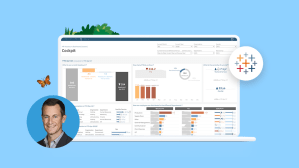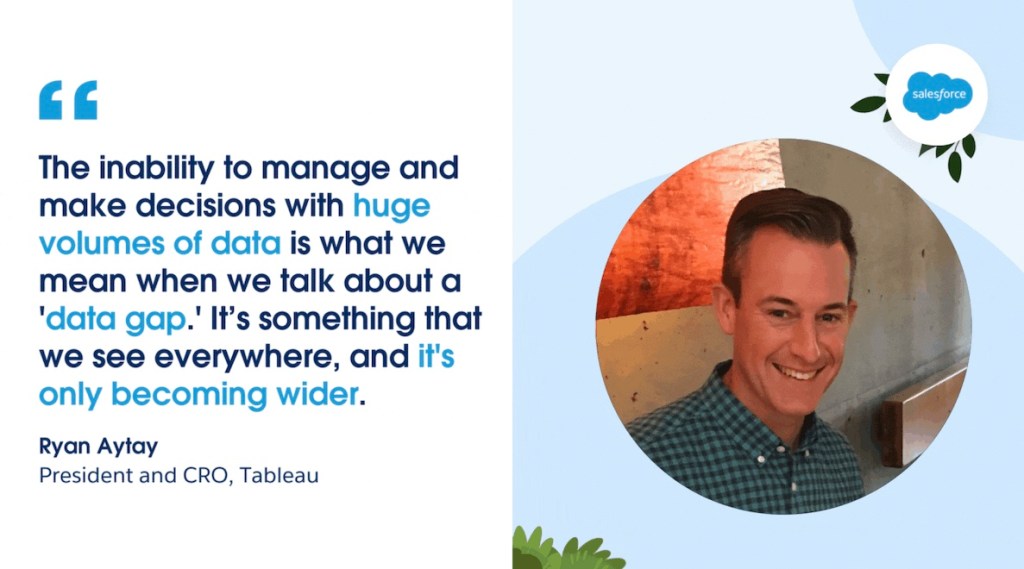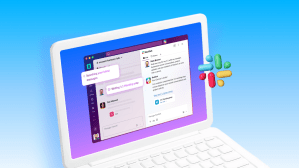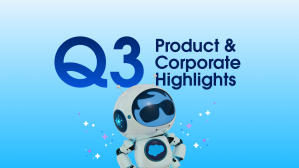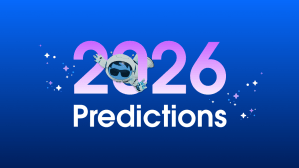Eighty-three percent of CEOs want a data-driven organization, according to a recent survey. And yet, only thirty percent believe they have one.
Making data-driven decisions has never been more important. In an era when organizations are accumulating massive amounts of data every day, and facing uncertainty in a highly unusual economic and political environment, being able to see and understand data is critical to making smarter, more strategic decisions.
At Dreamforce ‘22, Salesforce and Tableau announced innovations that use automated, intelligent, and real-time data to improve decision making. This includes Salesforce Genie, a new hyperscale real-time customer data platform that powers the entire Salesforce Customer 360 platform. Now with Tableau Genie and Tableau Light, companies can easily unlock analytics for everyone.
Here, Salesforce President and Tableau Chief Revenue Officer Ryan Aytay discusses his journey at Salesforce and unpacks how these innovations are helping to close the data gap and democratize data-driven decision making.
Q. You’ve been at Salesforce for 15 years. How have the company and your role changed over that time?
Currently, I serve as Salesforce President and Chief Revenue Officer of Tableau, but my time at Salesforce has been a journey! I started in corporate development, with our M&A team, and I worked on some of our key acquisitions – the ones that helped grow Marketing Cloud and Service Cloud. I also worked with our business development and partnership organizations, including our strategic partnership business, which is still intact today. And I worked closely with Bret Taylor at Quip, serving as Co-CEO there.
It’s been so exciting to see the growth trajectory we’ve been on throughout my time at the company, and to see the true Customer 360 vision that we’ve been working on together really come to fruition.
Q. Dreamforce just finished. How was the event for you?
I’ve been to 14 or 15 Dreamforces, and I’d say this was one of the best. The feedback I received was great, and not just regarding our business or our products. It felt like our commitment to our values — from equality through to sustainability — really came through.
I was fortunate enough to have some amazing conversations with customers and it made me realize what a profoundly unusual time this is for companies. Customers I talked with say they are dealing with supply chain crises, labor shortages due to political issues, and longer-term challenges coming out of the pandemic. It’s a hugely difficult environment in which to make business decisions.
Q. At Salesforce we talk about the ‘data gap’ that’s exacerbating decision-making challenges. Can you explain what the ‘data gap’ is?
Some senior executives say that they’re making the best decisions with the best data. But when you get down to it, only a small percentage of people at an organization really make data-driven decisions.
Many employees feel that they’re not equipped to make such decisions because they don’t have the right data or the right tools. Or, they might not be data literate. Historically, data-driven insights have been reserved for the data literate. Many people – who might work in sales, service, marketing or other departments – just don’t know how to be data driven.
The inability to manage and make decisions with huge volumes of data is what we mean when we talk about a ‘data gap.’ It’s something that we see everywhere, and it’s only becoming wider.
Q: Why should companies care about the data gap?
The amount of data we all need to manage is growing incredibly quickly — there are more smartphones than people nowadays! And, it’s fragmented. Data is stored in data warehouses, on-premise clouds, ERP systems, Workday, in Snowflake – it’s just everywhere. As a result, data is siloed and duplicative across most companies and they cannot create a single source of customer truth.
So it’s imperative that companies focus on that gap, and how to close it. We think the best way to do that is to build a strong ‘data culture’ throughout the business. Fostering that data culture with our customers is a lot of what we strive to do at Tableau and at Salesforce, to empower them to make better decisions.
Q: What’s the cost of not using all available data to inform decision making?
We can consider a personal example. Let’s say a person is trying to commute home from the Salesforce Tower here in San Francisco. A person might say, “well, before I jump on BART, I’m going to make a data-driven decision about which route is the fastest one to take.” They look at a bus schedule, and compare it with how long it’ll take for an Uber to pick them up. In this case, the Uber app is showing a long pickup time so they choose the bus ride.
But they’re not leveraging all the data available to them — they miss the fact that there’s a ride share that operates from their office to just a couple of blocks away from their home that’ll get them home 30 minutes faster. They’re missing that key piece of data they need to make a decision, and the result is, they’re sitting on a bus commuting for two hours longer than they have to.
That’s definitely frustrating, but in a business setting, if you make the wrong decision, or miss relevant data, the costs can be much greater. The cost can be having a business that is not as successful as it could be.
Our goal is to help every business user make the right decisions by leveraging all aspects of data that they may already have.
Q. Is that where Tableau Light comes in?
At Tableau, we have always had products that are very focused on the analyst, the Chief Data Officer, and top executives. But if you’re focused on rolling out a data culture at every level of the organization, you need to give everyone access to certain levels of data and data-driven insights.
Until now, doing powerful data analysis and visualizations at these departmental levels hasn’t been possible. That’s the problem Tableau Light solves. Tableau Light is our latest and most cost-effective solution designed to reflect the needs of users who might only need to access a few dashboards a month. It can help employees throughout an organization leverage data to make better decisions.
Q. Do you have an example of how Tableau Light helped a customer?
Siemens Energy AG is a great customer that is very focused on becoming data driven across their entire business. At Siemens Energy AG, whether you are manufacturing projects or widgets, you need to understand the supply chain, and you need to have access to supply chain data. Or maybe you work in the company’s retail environment, and you need to see data-driven information in real time to help with a sale. You can’t do any of that if it’s not made easy for you, right? Tableau Light helps facilitate that simplicity.
Those employees in manufacturing or in retail don’t need to explore data intensively, like analysts or Chief Data Officers. But they do need a few dashboards or visualizations per week to make better data-driven decisions.
For retail, you might have a retail store employee who needs to see in-store inventory and how it has changed, including what he or she needs to order next. That’s all in one dashboard. That person doesn’t need, for example, HR data or financial information–just one relevant dashboard. Tableau Light facilitates this for companies.
Q. Salesforce Genie has a role to play in better decision making too, right?
Genie helps businesses answer some key questions about data-driven decisions: How do you get a holistic view of the customer at scale? How do you do it in an automated way? How do you do it in real time? How do you do it in a way that is relevant to employees across every level of the organization?
These things are critical, because there’s always going to be a deluge of data, and working with it needs to be as easy as possible. Genie helps in making real time, data-driven decisions, which can dramatically help businesses avoid making the wrong decisions.
What really excites me about Genie is that it provides a harmonized view of every piece of information across the Customer 360, your sales data, your service data, your marketing data, and more — anywhere your organization has data.
While I think it depends on the industry, I worry that many companies may assume that they are data driven, when they are not necessarily working with the right data and visualizing it the right way. You have to ask yourself, “Are my decisions truthfully data-driven?” That’s where Genie can really help. With Tableau Genie, every business can monitor key performance indicators in real time to inform action across the business, including real-time purchase data for sales, real-time case spikes for service, and real-time web traffic for marketing.
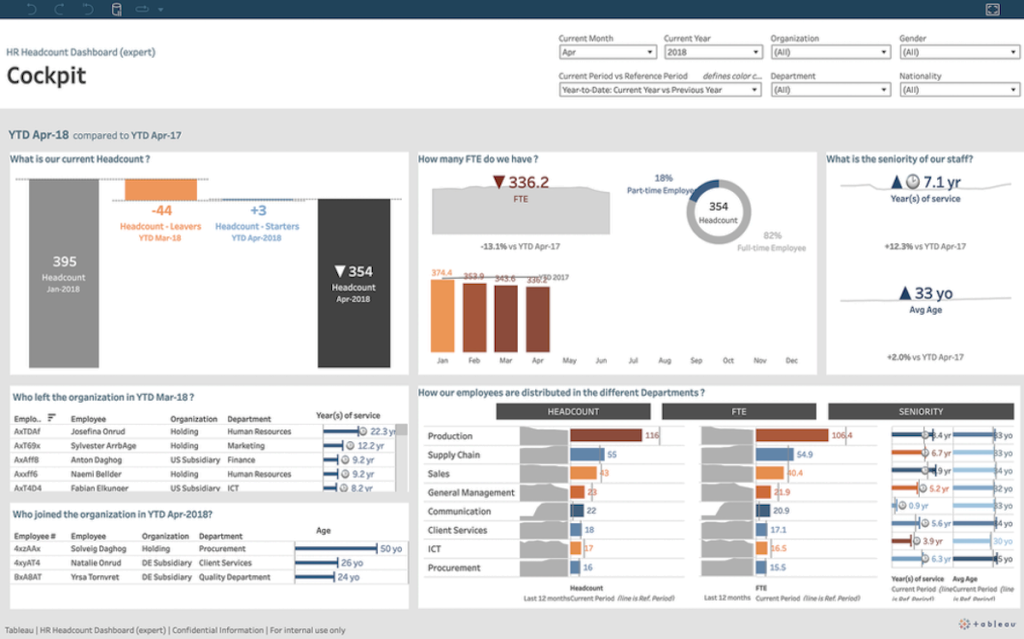
Q. Tableau Genie is out now. Can you give us an example of how it works?
Sure, let’s consider a consumer named Barry. Barry is buying, say, shoes, or he may have a service issue with his shoes. If it’s a service issue, say one of the soles fell off, then he has a service ticket. If he is buying shoes, then he is interested in getting the right offer at the right time.
In these different customer scenarios, the shoe company can provide much better experiences if it has access to real-time, harmonized data from Sales Cloud, Service Cloud and other sources, all powered by Genie and visualized in Tableau.The company needs to serve Barry the right experience at the right time, and it should be a simple, personalized experience. It needs to be relevant.
Now, the shoe company may have many Barrys within its data platform. What Genie is great at is discerning which is the “real” Barry, which is the “golden record” for this Barry, and what he needs. The company can provide the best service if it can visualize and evaluate Barry’s buying behavior across all its touchpoints with him.
That concept of visualizing all of this is not at all trivial. That’s where Tableau comes in. We provide the data visualization and exploration layer on top of Genie, facilitating real-time, automated, AI-powered insights on all relevant data. These visualizations drive the best decisions, and there are ways to instantly access them. Now, more than ever before, true data-driven decisions are easy to access for organizations of all types.
More information
- Check out Tableau’s latest offerings and integrations.
- Read the announcement of Salesforce Genie.
